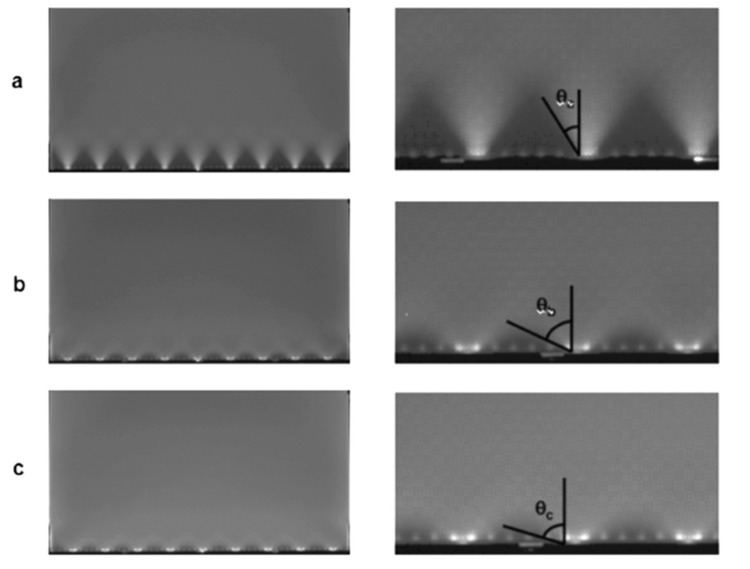 | ||
Uniformity tape is a microstructured thin-film mechanism for mixing and diffusing the light generated by light-emitting diodes (LEDs) in edge-lit digital displays, including monitors, televisions and signage.
Contents
Purpose
Compared to other sources of illumination, such as fluorescent and incandescent bulbs, LEDs are energy efficient and increasingly inexpensive. As hard-point light sources, however, LEDs have several significant limitations in edge-lit digital displays.
First, the light generated by LEDs must be spread evenly to all parts of the display by a light guide (typically a plate of poly(methyl methacrylate)), which transports light by total internal reflection (TIR). Extraction patterns on the surface of the light-guide meter out the light and generate a uniform brightness distribution.
Even with a light guide, dark zones can be noticeable along the injection edge closest to the LEDs. The existence of these dark zones requires that the injection edge be shielded by a border or bezel. The necessity of incorporating a bezel limits design options and the space available for displaying information.
Dark zones also influence the spacing between LEDs, which is typically between about 9 mm and 11 mm; placing LEDS farther apart creates more pronounced dark zones. This, in turn, limits the ability of designers to reduce the number of LEDs in a display despite the cost advantages and increased energy efficiency of such a reduction. Furthermore, the poor light-mixing of current light guides makes digital displays highly sensitive to variations in LED color and brightness. Closely packed LEDs can also create thermal management issues.
The first microstructured light-mixing tape was scheduled to be introduced in late 2011. 3M™ Uniformity Tape is designed to be applied directly to the injection edge of a light guide for the purpose of defusing the light generated by LEDs. The microstructure consists of linear aspheric prisms (Figure 1) that are aligned perpendicular to the plane of the guide. The size of the microstructure is small compared to the size of the LEDs, typically on the order of 12-50 μm. As a result, no registration of the tape with the LEDs is required.
Figure 1. Schematic of Tape on Light Guide and Tape Microstructure
Benefits
Microstructured Uniformity Tape greatly reduces dark zones by inducing lateral light-spreading in the plane of the light guide.
The effect of the 3M Uniformity Tape on the injection of LED light from a nominally lambertian LED is shown in Figure 2a-c. The left image in Figure 2a shows the injection cone angle of the LED into a light guide under normal TIR conditions (+/-42 degrees in a conventional PMMA light guide with an optically flat entrance face). The right image shows a close-up view of the left image. Figures 2b and 2c (and their details on the right) show the effects of two variations of 3M Uniformity Tape, with refractive index equal to 1.54 and 1.62, respectively.
Figure 2. Demonstration of the Light Spreading Enabled by Uniformity Tape
Research conducted by 3M indicates that the tape enables a 50 percent reduction in LED count. Additional redesign of the light guide's extraction pattern could lead to an LED reduction approaching two-thirds of current levels. The tape also opens opportunities for digital displays with lower cost, higher performance and new design flexibility, including the development of a robust backlight that will retain a uniform brightness despite multiple LED failures.
These benefits can be achieved with little effect on overall system efficiency. Injection losses can be as low as 1-2 percent with a properly designed light guide.
Application of Uniformity Tape also appears to provide ancillary benefits. When applied to the input edge of the light guide, the optically clear adhesive will wet out and conform to the surface roughness of the light guide edge so that the film and light guide were optically coupled (i.e., no air is trapped between them). As a result of this optical coupling, the PMMA plate does not require the level of polishing required in a conventional light guide; this suggests that Uniformity Tape could lead to a reduction in manufacturing steps and lower costs.
